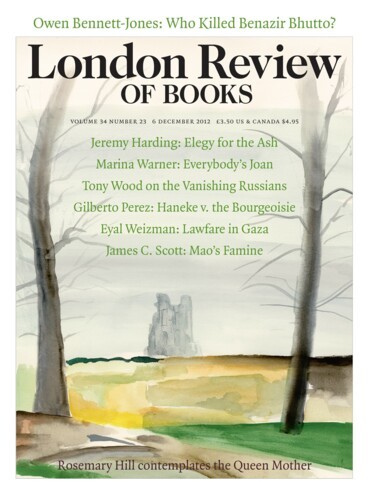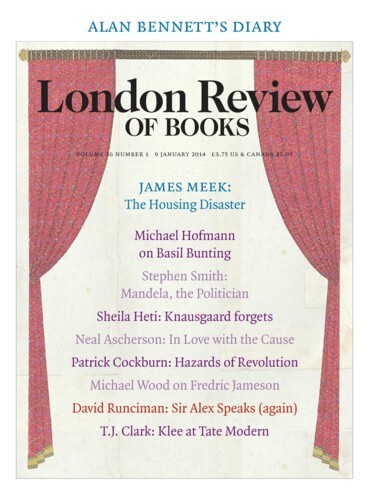The latest round of fighting in Gaza should be understood not as an interruption of an imaginary calm, but as the compounding of one kind of violence with another. The status quo that the people of Gaza have now returned to – the state of occupation, domination, isolation and siege – is violence by other means. Indeed, the structural violence of the occupation is physical and real and no less deadly than the bombs and guided rockets; it is only much harder to identify and represent in images and thus also to rally against.
Eyal Weizman
Eyal Weizman is founder of Forensic Architecture. His books include Hollow Land and The Least of All Possible Evils.
Short Cuts: The Book of Destruction
Eyal Weizman, 6 December 2012
In the course of the eight-day aerial bombardment of Gaza by Israel – using drones, F-16s and Apache helicopters – more than 1350 buildings were hit. They included military depots, which are considered legitimate targets under international humanitarian law. But the police stations, TV stations, a local healthcare centre, ministries, road tunnels and a bridge that were also...
Short Cuts: Arafat’s Tomb
Eyal Weizman, 9 January 2014
The investigation into the cause of Arafat’s death began with his famed keffiyeh, the one he had with him on 29 October 2004, when he left Palestine for medical treatment in France after suddenly falling ill. In the summer of 2012 it was one of a few items, along with a toothbrush and underwear, handed over for analysis to the Institut de Radiophysique in Lausanne by Arafat’s widow, Suha. The Swiss scientists found that the items contained traces of the radioactive poison polonium 210, and that November, in a process directed by the Palestinian Authority, a pathologist exhumed Arafat’s grave in Ramallah. Sixty samples from his remains and the surrounding parts of his tomb were distributed to three forensic teams: one Russian, one Swiss, one French.
The officer at the US embassy informed me that my authorisation to travel had been revoked because the ‘algorithm’ had identified a security threat. He said he did not know what had triggered the algorithm but suggested that it could be something I was involved in, people I am or was in contact with, places to which I had travelled (had I recently been in Syria, Iran, Iraq, Yemen, or Somalia or met their nationals?), hotels at which I stayed, or a certain pattern of relations among these things. I was asked to supply the embassy with additional information, including 15 years of travel history, in particular where I had gone and who had paid for it. The officer said that Homeland Security investigators could assess my case more promptly if I supplied the names of anyone in my network whom I believed might have triggered the algorithm. I declined to provide this information.
Tunnel Vision: Israel’s Multidimensional Warfare
Eyal Weizman, 16 December 2021
Now that Gaza’s perimeter is completely sealed – by fences on land and the Israeli navy at sea – the axis of conflict has turned 90 degrees. Each new Israeli bombing campaign – in 2008-9, 2012, 2014 and May 2021 – has pushed Palestinian resistance deeper underground, to extend and fortify its elaborate system of tunnels. The deaths of more than five thousand...
Pieces about Eyal Weizman in the LRB
Imagined Territories: Designing the Occupation
Yonatan Mendel, 2 August 2007
Being the son of an Israeli civil engineer I never believed I would one day write something about architecture. My father would come back home with many boring black and white sketches, and I...
Read anywhere with the London Review of Books app, available now from the App Store for Apple devices, Google Play for Android devices and Amazon for your Kindle Fire.
Sign up to our newsletter
For highlights from the latest issue, our archive and the blog, as well as news, events and exclusive promotions.




